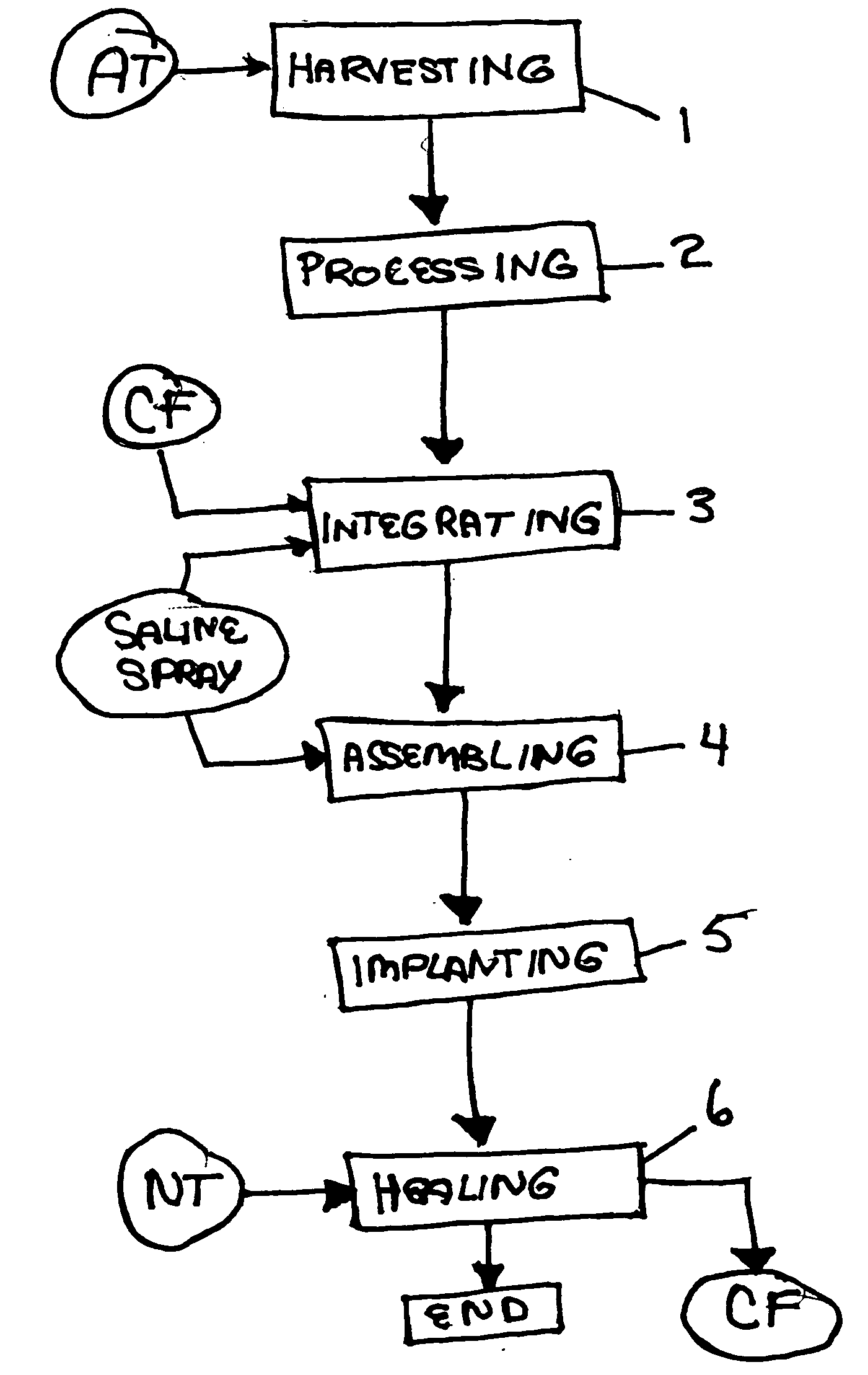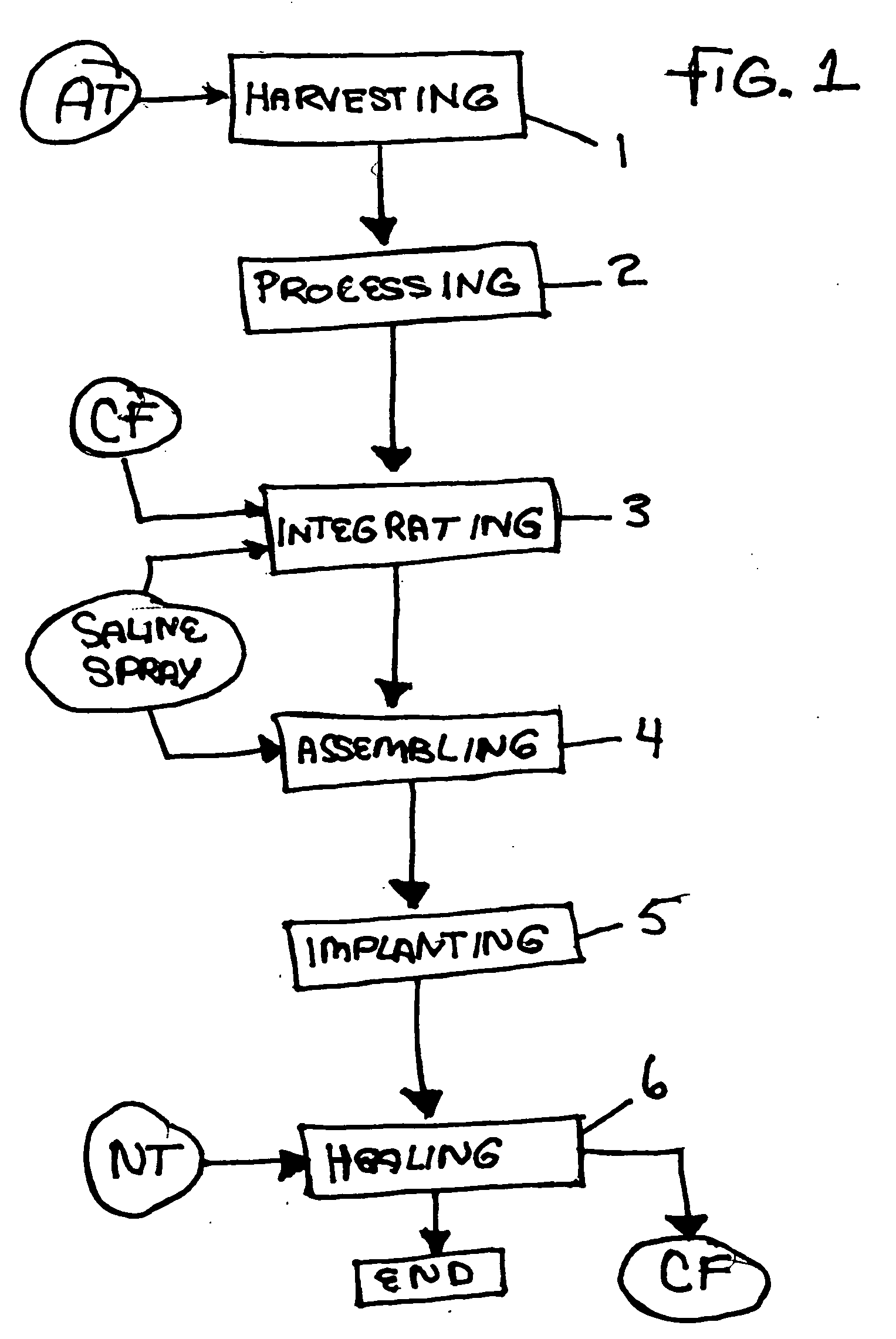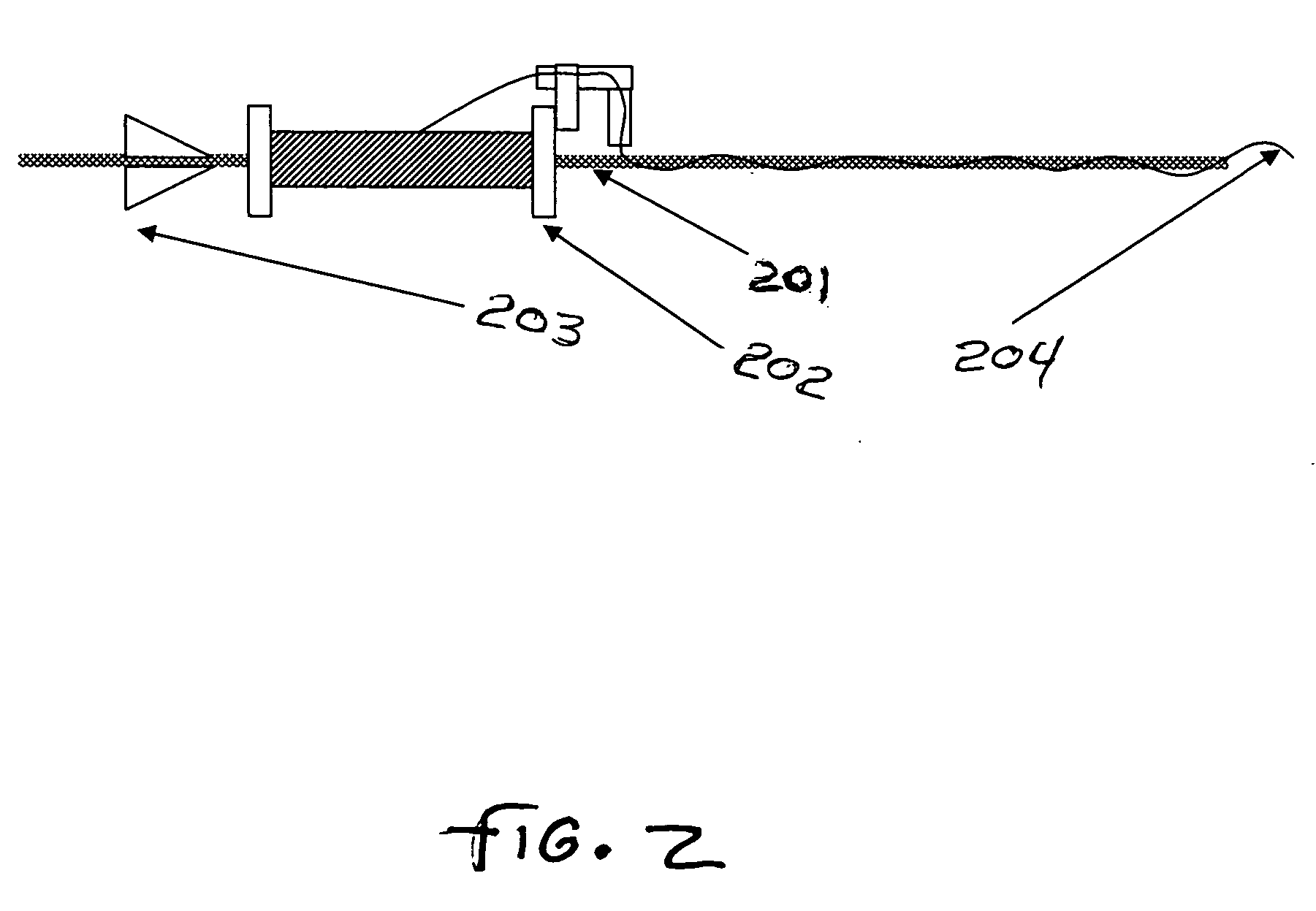Carrier fiber assembly for tissue structures
a tissue structure and carrier fiber technology, applied in the field of carrier fibers, can solve the problems of limited success in the use of autologous cultured cells grown on scaffolds, and achieve the effects of facilitating the assembly of two and three dimensional structures, facilitating the assembly process, and facilitating the rapid assembly of two
- Summary
- Abstract
- Description
- Claims
- Application Information
AI Technical Summary
Benefits of technology
Problems solved by technology
Method used
Image
Examples
example # 1
EXAMPLE #1
Weaving of Tubular ATY / CF Structures Oriented in the Fill Direction
[0026] The first example of an ATY / CF scaffold or structure and process of the invention is of weaving ATY / CF fabric tubes oriented in the fill direction. For this example, cylindrical tubes are fabricated to various lengths and diameters. The use of a weaving process is preferred because it allows separate selection of the thread line density and type in the axial and circumferential directions. Narrow width weaving equipment of a few inches is preferred. Needle or rapier insertion are best for the filling insertion mechanism. Referring to FIG. 4, the major modification of the heddle / reed insertion section 400 is the use of an aqueous saline bath 404 to preserve the viability of live tissue. Tissue yarn ATY 401 is used in filling, and carrier fiber CF 402 is used in warp. The weave design uses the filling oriented tube method. The key advantage of this system over warp oriented tubes is the ease with whic...
example # 2
EXAMPLE #2
Weaving of Tubular ATY / CF Structures Oriented in the Warp Direction
[0033] The second example of an ATY / CF scaffold or structure and process according to the invention is the weaving of a warp oriented tube. In this example, shuttle type weaving is preferred and the formation is of a two-ply fabric with woven selvedges. This follows the techniques for fly shuttle weaving, which are well understood in the textile arts. The filling yarn must be wound on a shuttle bobbin and the shuttle moves for each filling insertion. In this method the tube diameter must be pre-defined as the warp end-count and the reed size in use will define the tube circumference. The key advantage of this method is the elimination of the CTZ (closed tape zone) at the two edges of the tube. With fly shuttle weaving, woven selvedges avoid the requirement of a CTZ. With these exceptions to the first example fill direction tube process, all the other weaving related process specifications apply. Combined a...
example # 3
EXAMPLE #3
Braiding of ATY / CF Structures
[0034] The third example of an ATY / CF scaffold or structure and process according to the invention is of braiding methods and braided structures useful for the assembly of small vessel scaffolds. The CF is integrated with the ATY as described and is wound on bobbins. The section of integrated CF / ATY is moved forward into the braiding zone and the structure is fabricated using the required number of braided ends for the tube size required. The method may be preferred for the elasticity intrinsic to the braid and rapid change in tube diameter, mirroring the recipient's vessel variation. It should be noted that fiber orientation in such structures is limited and cover in larger vessel sizes requires very complicated equipment.
PUM
| Property | Measurement | Unit |
|---|---|---|
| width | aaaaa | aaaaa |
| width | aaaaa | aaaaa |
| width | aaaaa | aaaaa |
Abstract
Description
Claims
Application Information
 Login to View More
Login to View More - R&D
- Intellectual Property
- Life Sciences
- Materials
- Tech Scout
- Unparalleled Data Quality
- Higher Quality Content
- 60% Fewer Hallucinations
Browse by: Latest US Patents, China's latest patents, Technical Efficacy Thesaurus, Application Domain, Technology Topic, Popular Technical Reports.
© 2025 PatSnap. All rights reserved.Legal|Privacy policy|Modern Slavery Act Transparency Statement|Sitemap|About US| Contact US: help@patsnap.com



